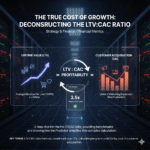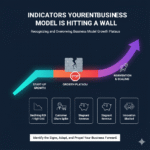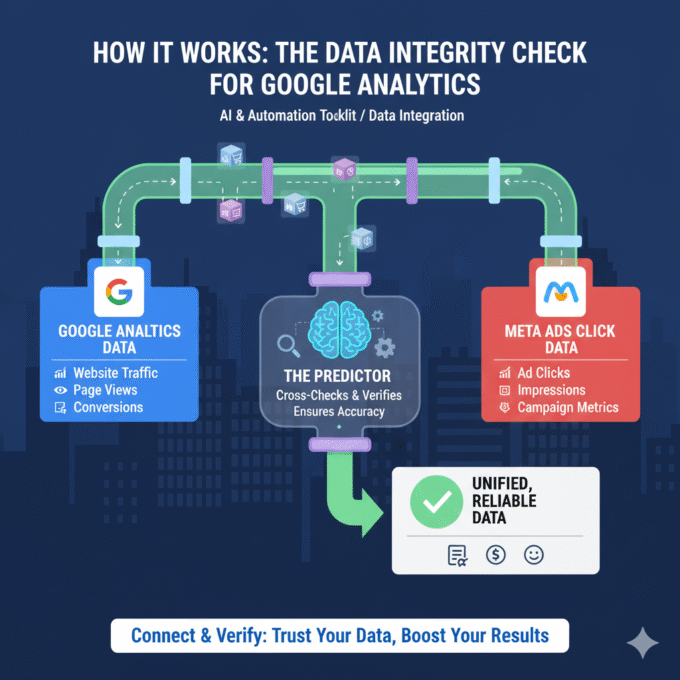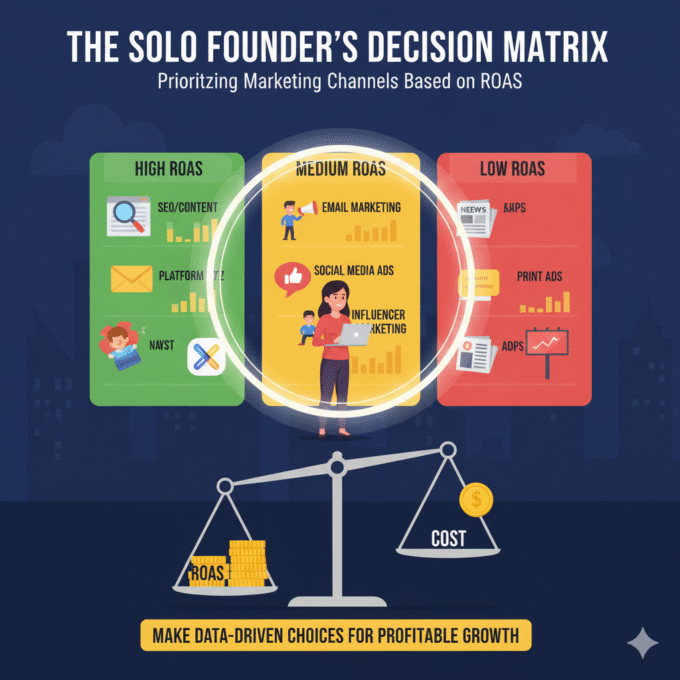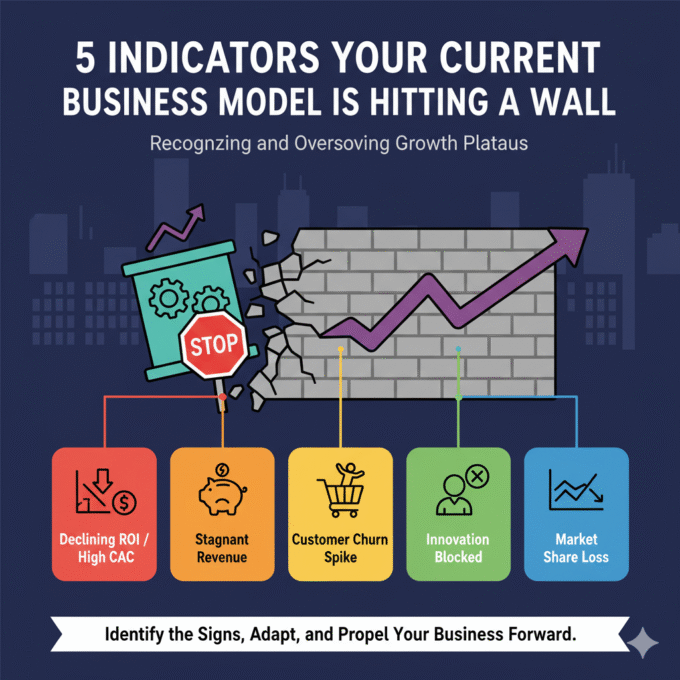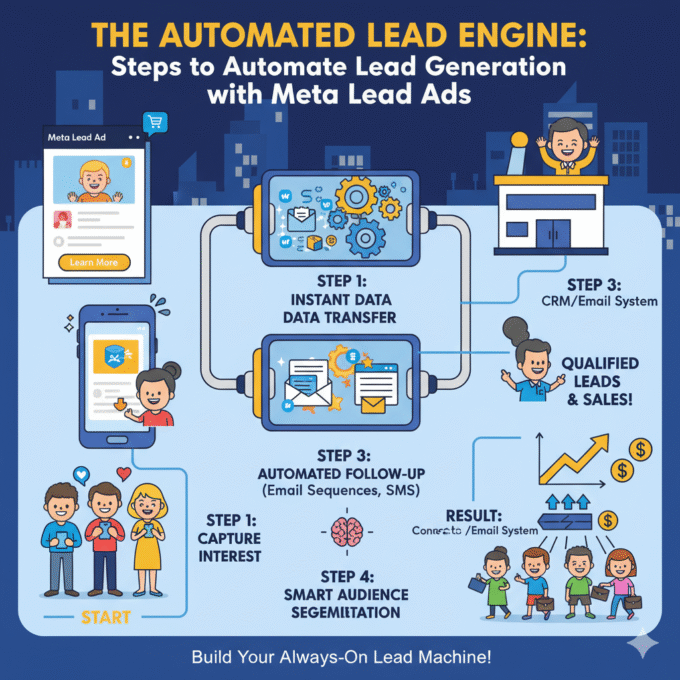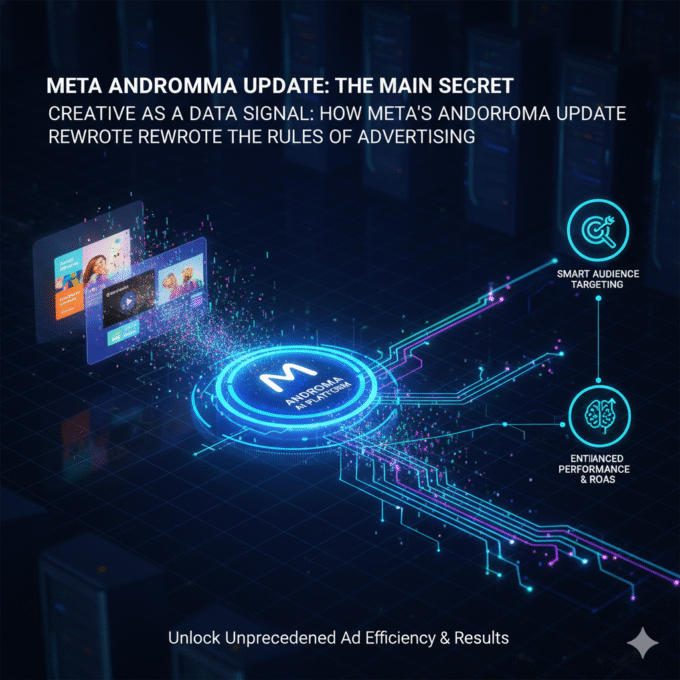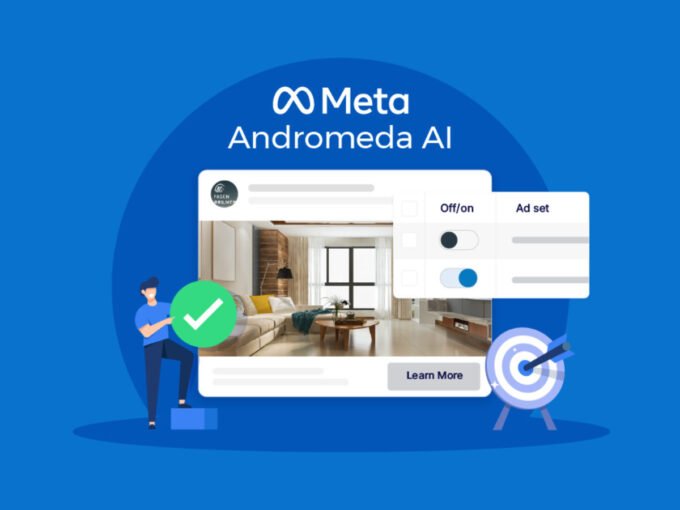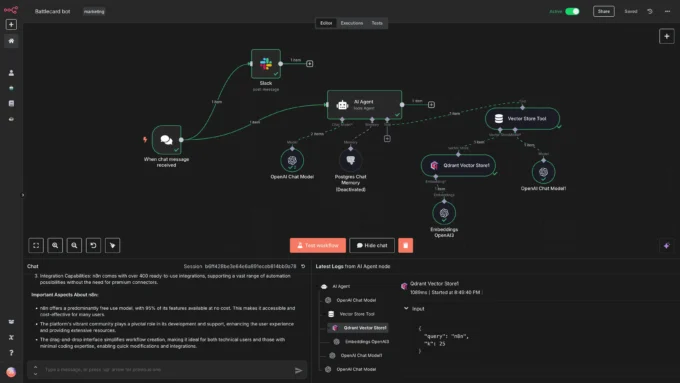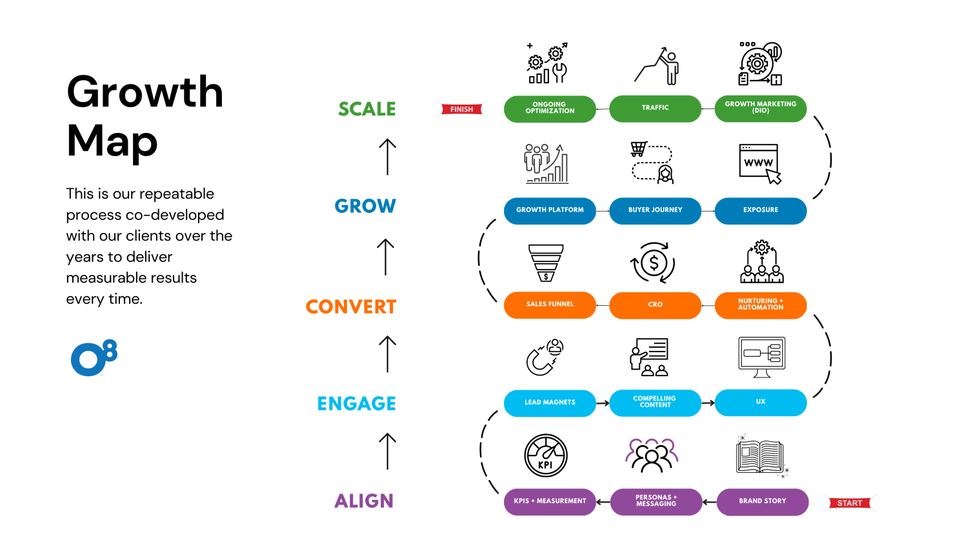
The O8 Growth Map: A Technical Analysis of the 5-Stage Hybrid Iterative Framework
September 29, 202513 Mins read31 ViewsGrowth guide map

I. Strategic Context and Framework Architecture
A. Introduction to the O8 Growth Map and Core Promise
The O8 Growth Map represents a formalized, proprietary process designed by the O8 agency, a data-driven digital marketing specialist, to achieve measurable, repeatable growth for its clientele.1 This framework is not merely a collection of isolated marketing tactics but a structured, comprehensive roadmap for sustainable digital scaling. It systematically guides a business through five macro-stages—
ALIGN, ENGAGE, CONVERT, GROW, and SCALE—which define the progression from foundational strategy through execution, transaction maximization, and ultimate expansion.2
The framework’s core value proposition, reinforced by the agency’s stated commitment to eliminating “vendor chaos,” lies in its inherent design as a unified process.1 Modern digital growth necessitates the seamless integration of traditionally siloed functions, including marketing, sales, product development, and infrastructure technology. By structuring the growth strategy through the five stages, the O8 Map ensures that all strategic and tactical elements are coordinated under one organizational roof. This approach mirrors best practices observed in complex system development, such as the principles of iterative and incremental development found in the Unified Software Development Process, adapted here for high-velocity growth marketing.3 The structure mandates cross-functional coordination, ensuring that the foundational elements defined early in the process directly and logically inform the execution and optimization efforts later on.
B. Structural Analysis: Funnel, Flywheel, or Loop?
Understanding the architecture of the O8 Growth Map requires positioning it relative to prevailing growth models: the Funnel and the Growth Loop/Flywheel. Traditional linear funnels, such as the AARRR (Acquisition, Activation, Retention, Revenue, Referral) model, map the customer lifecycle as a sequence where users drop off at each stage, and the process effectively resets upon conversion.5 While providing clear management visibility, this linear strategy often leads to inefficiencies, particularly in digital products, because it requires constant new input (acquisition) without inherently utilizing the output of the process to generate further input.
The O8 Map utilizes a recognizable linear progression (ALIGN → CONVERT) to manage the initial customer journey stages effectively. However, the model structurally diverges from the purely linear funnel by explicitly transitioning into the GROW and SCALE phases, which culminate in Ongoing Optimization. This mechanism generates outputs (successful optimizations, loyal customers, referrals) that are then reinvested into the system’s inputs (refined strategy, targeted traffic), creating a compounding effect.7 This mechanism provides the momentum and sustainability characteristic of a Flywheel or Growth Loop model, where growth scales exponentially rather than incrementally.7
The architecture of the O8 framework is best described as a Hybrid Iterative Framework. It leverages the clarity and measurement precision of the funnel structure in its initial stages (ALIGN, ENGAGE, CONVERT) to provide organizational alignment and a shared map for execution.11 Simultaneously, it incorporates the self-sustaining, cyclical momentum of a Growth Loop through the final stages (GROW, SCALE, and the mandated feedback back to ALIGN). This synthesis is critical for modern scaling, ensuring both organizational transparency in execution and the exponential scalability necessary for sustained market expansion.
A comparative analysis of the O8 map against the established models highlights its differentiated strategic positioning:
Comparative Growth Framework Analysis
| Framework Feature | Traditional Funnel (AARRR) | Growth Flywheel | O8 Growth Map (Hybrid Model) |
| Structure | Linear, stages reset at the end. | Circular, continuous momentum. | 5-Stage Linear Progression terminating in a Cyclical Iteration Loop. |
| Primary Goal | Acquisition and initial conversion. | Customer retention and advocacy. | Measurable, repeatable, and scalable growth (incorporating both). |
| Feedback Mechanism | Implicit (requires manual analysis). | Explicit (customer input fuels sales/marketing). | Explicit and formalized (Ongoing Optimization loop feeds back into strategy). |
| Key Output | Revenue. | Retention, Referral, and Momentum. | Scaled Traffic, Ongoing Optimization, and Measurable ROI. |
II. Phase I: ALIGN — Establishing the Strategic Foundation
The ALIGN phase is the foundational stage where strategic coherence and measurability are established. Failure to achieve precision in this phase guarantees diminished results and wasted effort in subsequent tactical execution.
A. Brand Story and Narrative Coherence
The Brand Story is the strategic cornerstone of the framework, representing the company’s core identity, mission, and value proposition.12 Its purpose extends beyond mere marketing; it must be authentic, consistent, and relatable to forge an emotional connection with the target audience.13 The narrative must articulate the problem the brand seeks to solve, framing the company’s offerings within a context of aspiration or relief from a specific frustration.13
Achieving strategic alignment means ensuring this core narrative is consistently reflected across all customer touchpoints, from the website and marketing materials to customer service interactions.15 This consistency creates a unified, recognizable brand identity, which is essential for building trust. While often viewed as a “soft” element, the brand story directly serves as a conversion driver. By effectively tapping into human emotion, the story transforms the brand’s abstract value proposition into a relatable, motivating force that accelerates customer decision-making later in the conversion pipeline.14 The effectiveness of this foundational narrative is gauged through hard metrics, such as Brand Lift (monitoring search volume for the brand name) and engagement metrics like time on page and social shares.14 The alignment phase recognizes that while data informs tactics, compelling stories move customers to act.
B. Personas and Targeted Messaging
Detailed buyer personas serve as the vital link between the high-level Brand Story and tactical execution.17 Persona development is not anecdotal; it requires thorough market research, data analysis, and the use of direct customer feedback (surveys, reports) to create detailed profiles that capture the audience’s specific demographics, motivations, behaviors, and, most importantly, pain points.18
These profiles enable the organization to tailor its subsequent marketing efforts precisely to the user’s needs, motivations, and purchasing behaviors.20 The Personas inform the structure of the entire customer journey, helping identify friction points and opportunities for value addition.21 This accuracy is particularly crucial for the ENGAGE stage, as accurate personas guide the development of Lead Magnets, ensuring that the resources developed directly address identified pain points.18 Furthermore, personas inform optimal UX design, tailoring the online experience to reduce friction for the specific user type identified.20 If the personas are inaccurate or generalized, all subsequent efforts in content creation, lead generation, and CRO become inefficient guesswork, directly violating the framework’s core principle of delivering measurable results.
C. KPIs and Measurement Frameworks
The definition of Key Performance Indicators (KPIs) and the establishment of robust Measurement Frameworks are non-negotiable prerequisites for scalable growth.23 Growth KPIs specifically measure the efficiency and performance of the company’s growth efforts. These metrics must be clearly defined and tailored to the unique dynamics of the business, as a stock definition of an “active” user, for instance, is insufficient for precise strategic steering.24
For maximum effectiveness, KPIs must be aligned with overall business objectives and formalized using the SMART goal framework (Specific, Measurable, Attainable, Relevant, and Time-bound).17 This process establishes a clear roadmap and measurable targets for incremental progress. Crucially, the placement of Measurement within the initial ALIGN phase establishes a continuous audit cycle. KPIs defined here—which typically span categories such as reach, activation, usage, engagement, and retention—dictate the parameters that must be tracked and analyzed across all subsequent stages.15 This foundational measurement infrastructure is the precise component that allows the “Ongoing Optimization” feature in the SCALE phase to function correctly, transforming the entire framework into a continuous, data-driven system.
III. Phase II: ENGAGE — Attracting and Capturing Intent
The ENGAGE phase is where the strategic alignment established in Phase I meets the market. It focuses on using targeted assets to attract traffic, provide substantial value, and formally capture user information, moving them from anonymous visitors into measurable leads.
A. Lead Magnet Strategy and Design
Lead magnets are the primary tool for translating awareness into actionable intent. To be successful, a lead magnet must satisfy several criteria: it must be helpful, credible, and focus on addressing a specific, acute problem faced by the target audience.18 The asset must provide solutions that users can implement quickly for immediate results, offering substantial benefits such as an eBook, webinar, or exclusive tool to incentivize the exchange of contact information.18
Strategic design is paramount. Lead magnets must demonstrate industry expertise to build credibility and trust.18 To maximize conversion, instant access upon submission of contact information is essential, avoiding unnecessary friction.18 Furthermore, a successful lead magnet strategy must be inherently connected to a clear plan for follow-up—the required contact information must be strategic, and a thank-you email sequence should initiate the nurturing process (linking directly into the CONVERT stage).25 The lead magnet operates as the critical gatekeeper, whose conversion rate serves as a direct quantitative measure of the success of the preceding ALIGN phase in identifying and addressing audience pain points.
B. Compelling Content and Trust Building
Compelling content serves as the value engine of the ENGAGE phase. It must consistently provide value to the audience by addressing their pain points, answering questions, and solving problems, while simultaneously educating, informing, or inspiring them in a manner aligned with the brand’s offerings and expertise.19 By consistently delivering value, the content positions the business as a trusted source of insights within its industry, building the credibility necessary for users to consider a conversion later on.
To maximize its effectiveness, content presentation must be optimized. Visual elements, including images, videos, and infographics, are crucial for enhancing appeal and increasing engagement and shareability.19 The design and incorporation of these multimedia elements must align with the brand identity established in the ALIGN phase. This optimization highlights the strong dependency between compelling content and the user experience (UX). Regardless of the quality of the content, if it is presented on a slow, poorly navigable, or non-mobile-optimized platform, engagement will suffer drastically, meaning the content strategy must be executed in harmony with high-quality UX design principles.20
C. The User Experience (UX) Imperative
User Experience (UX) is strategically positioned in the ENGAGE phase as a core driver of engagement and conversion, rather than merely a design afterthought. A stellar UX provides an intuitive and seamless journey from the moment of discovery to the point of purchase, cultivating satisfaction and driving brand loyalty.20 The emotional response evoked by the user interface significantly impacts subsequent engagement metrics, conversion rates, and ultimately, return on investment (ROI).
Key UX techniques include thorough user research and persona development, linking the design back to the strategic ALIGN phase.20 Technically, this mandates user-friendly website design, clear navigation, and comprehensive mobile optimization, as the majority of modern users access digital services on mobile devices.20 Any friction points identified during the ENGAGE phase—such as poor site speed, confusing navigation, or overly complex forms—become immediate, high-priority hypotheses for the iterative testing conducted during the CONVERT and SCALE phases. For instance, streamlining a checkout process (a UX task) directly reduces cart abandonment and boosts conversion rates.20 Therefore, UX is both a core component of initial engagement and a constant subject of continuous optimization that feeds the entire growth loop.
IV. Phase III: CONVERT — Maximizing Transactional Efficiency
The CONVERT phase is the operational nexus where qualified leads are actively guided toward transaction. The focus shifts from general engagement to maximizing transactional efficiency, often leveraging automation to ensure consistency.
A. Optimizing the Digital Sales Funnel
The conversion process utilizes an underlying sales funnel model that progresses prospects through distinct psychological and behavioral stages: Awareness, Interest, Consideration, Intent, and finally, Evaluation and Purchase.26 Optimization of this funnel requires determining the most effective channels for capturing high-quality prospects and establishing clear criteria for moving leads between stages based on their behavior.26 For instance, a prospect moving from ‘Interest’ to ‘Consideration’ shifts from asking general questions to focusing on how the product addresses their specific pain points.26
A critical operational metric derived from tracking this behavior is funnel velocity—the rate at which a prospect transitions from the initial engagement to a completed conversion. Efficient growth demands maximizing not only the volume of conversions but also the speed of that conversion process. Regular review and adjustment of sales funnel criteria ensure that the process remains streamlined and responsive to evolving prospect behaviors, a prerequisite for efficient scalability.
B. Conversion Rate Optimization (CRO) Protocols
Conversion Rate Optimization (CRO) is the systematic process designed to increase the percentage of visitors who complete a desired action, which may range from signing up for an email list to making a purchase.27 A successful CRO strategy is fundamentally customer-centric, focusing on resolving pain points within the user experience.28
The CRO process is inherently iterative: it begins by identifying important conversion actions, analyzing current funnel performance, and gathering user data.28 This data fuels the creation and rigorous testing of hypotheses (e.g., A/B testing different layouts, headlines, or CTAs).27 Tactical efforts must be prioritized based on impact, typically targeting high-value areas like landing pages, pricing pages, and checkout flows.27 Small, precise changes—such as hyper-specific CTA language (e.g., changing “Submit” to “Get Your Free Guidebook”)—can yield substantial payoffs.27 Furthermore, personalization, which dynamically adapts the user experience based on browsing history, location, or referral source, significantly boosts conversion rates by increasing relevance.29 The output of this structured A/B testing is crucial; the successful learnings are not isolated events but rather the critical inputs that fuel the “Ongoing Optimization” component of the SCALE phase, transforming localized conversion improvements into systemic, repeatable growth.30
C. Nurturing and Marketing Automation
Implementing robust Nurturing and Marketing Automation systems is essential for maximizing conversion efficiency and preparing the system for high-volume scaling. Automation significantly reduces the necessity of manual intervention, saving time and ensuring consistency in engagement practices.31 Without automation, organizations risk losing leads due to inconsistent follow-up or delayed responses.
Strategic automation involves deploying tools that integrate seamlessly with existing CRMs and email platforms.31 This allows for advanced segmentation of the audience based on their behavior and funnel stage, enabling the delivery of highly personalized, timely, and pertinent content.31 Examples include automated email sequences tailored to lead status and retargeting campaigns across major platforms (like Google and social media) to maintain brand presence and coax interested but unconverted prospects back into the funnel.31 This level of consistent, personalized engagement and efficiency is indispensable; it guarantees that the conversion processes perfected during this stage remain consistent and highly scalable as traffic volume increases dramatically in the subsequent phases.
V. Phase IV & V: GROW and SCALE — Achieving Iterative Momentum
The final two macro-stages, GROW and SCALE, define the O8 map’s commitment to sustainable, exponential growth by focusing on infrastructure, expansion, and continuous optimization through feedback loops.
A. The Growth Platform and Buyer Journey (GROW)
The Growth Platform component represents the underlying technological and data architecture necessary to support multi-channel scaling. This includes robust Customer Relationship Management (CRM) systems, advanced analytics tools, and integrated systems capable of handling complex lead segmentation and automation across various touchpoints.7 This platform is the essential engine required to manage the compounding effects of a growth system.
Coupled with infrastructure is the continuous refinement of the Buyer Journey. While the initial journey is mapped during ALIGN and executed during ENGAGE/CONVERT, the GROW phase mandates continuous customer journey mapping.21 This iterative analysis strengthens customer relationships by pinpointing and resolving previously undetected friction points, ensuring the experience aligns perfectly with customer expectations.22 The operational capability provided by the Growth Platform enables the sophisticated, real-time data collection necessary to conduct this continuous journey analysis, thereby collecting the critical data that fuels the iteration cycles in the SCALE phase.
B. Scaling Exposure and Traffic Generation
Achieving true scale requires moving beyond transient acquisition campaigns and generating high-quality, sustainable inputs. The O8 map emphasizes Traffic generation linked specifically to Growth Marketing (SEO) [Image]. SEO is prioritized because it increases both the quality and volume of organic traffic arriving on the website.33 By optimizing content for intent-based searches, SEO ensures that the business reaches users who are inherently more likely to take a desired action, thus directly boosting conversion rates and overall revenue.34
Effective scaling also involves market expansion, which means increasing market share and reaching a broader audience, potentially across new geographies.33 Aggressive, strategically targeted marketing efforts are required to ensure the traffic volume matches the newly optimized conversion capacity. The alignment between high-quality (intent-based) traffic and the carefully defined personas (from ALIGN) is what dictates the overall efficiency of the entire growth loop. If the inputs are high-quality, they maximize the compounding effect, providing the necessary low-cost, scalable fuel for the ENGAGE and CONVERT machinery.7
C. Ongoing Optimization and the Iterative Feedback Loop (FINISH to START)
The core mechanism ensuring the framework’s repeatability and sustainability is Ongoing Optimization, which is achieved through the formalized practice of iterative testing.30 This phase requires the adoption of a “Test & Learn” culture, wherein small, data-driven, incremental changes are continuously tested, measured, and refined, rather than relying on costly, all-or-nothing launches.30
Iterative testing drives faster feedback loops, which translates directly into accelerated growth, reduced wasted spend, and continuous adaptation to evolving user needs.37 This process transforms growth from a linear effort into the compounding, exponential self-sustaining cycle characteristic of a growth loop.7 The output of this continual optimization—successful A/B test results, refined messaging, higher referral rates, and improved customer satisfaction—is immediately reinvested into the ALIGN phase. For example, a successful test on a landing page informs updates to the Brand Story messaging, or high customer satisfaction scores (NPS, retention 38) refine the core target Personas. This systematic feedback loop closes the framework, validating the O8 model as an operational growth loop capable of mitigating risk by validating strategies based on evidence before scaling investments.30
VI. Synthesis, Operationalization, and Strategic Recommendations
A. The O8 Map as a Unified Operational System
The O8 Growth Map functions as a tightly integrated system where the 15 micro-components possess critical cross-functional dependencies. The successful application of the framework requires recognizing that strategy (ALIGN) dictates execution (ENGAGE), which in turn is measured for efficiency (CONVERT), and finally used as fuel for continuous momentum and replication (GROW and SCALE).
For example, the Personas defined in ALIGN dictate the specific Compelling Content created in ENGAGE. The effectiveness of that content in generating leads is then measured by the Lead Magnet Conversion Rate (ENGAGE). The subsequent optimization of the Lead Magnet and landing page is achieved through CRO Protocols (CONVERT), and the successful findings are then standardized and scaled through Ongoing Optimization (SCALE). This flow demonstrates that inefficiency in any single component breaks the continuity and measurability of the entire system. Therefore, the overall health of the O8 Growth Map is measured not just by individual stage KPIs, but by high-level systemic metrics, such as Customer Lifetime Value (CLV), the efficiency of the Growth Loop (output reinvested as input), and the overall Customer Retention Rate.9
B. Key Performance Indicators for System Health
To ensure the delivery of “measurable results,” the framework mandates clear KPI alignment across all five stages, connecting strategic activity to quantitative outcomes:
Growth Map Stage-to-KPI Alignment
| O8 Stage | Key Strategic Focus | Foundational KPIs (Input Metrics) | Output Metrics (Measurable Results) |
| ALIGN | Strategic Coherence & Definition | Brand Awareness, Narrative Alignment Score, Persona Accuracy, SMART Goal Attainment Rate | Systemic Efficiency (CPA/LTV Ratio) |
| ENGAGE | Lead Generation & Activation | Lead Magnet Conversion Rate, Content Engagement (Time on Page), Trial Sign-ups, Bounce Rate (UX) | Marketing Qualified Leads (MQLs) |
| CONVERT | Transactional Efficiency & Nurturing | Conversion Rate (CRO), Sales Funnel Velocity, Email Open/Click-Through Rates (Automation) | Revenue Generated, Customer Acquisition Cost (CAC) |
| GROW/SCALE | Iteration, Expansion, & Momentum | A/B Test Win Rate, Organic Traffic Quality/Volume (SEO), Referral Rate, Customer Satisfaction (NPS) | Compounding Growth Rate, Market Penetration, ROI |
C. Strategic Conclusions and Recommendations
The analysis of the O8 Growth Map reveals a sophisticated, hybrid framework designed to move organizations beyond the limitations of linear funnels and capture the momentum of iterative growth loops.
- Mandate Investment in Data Infrastructure: The framework’s promise of “measurable results” and its reliance on automation and ongoing optimization necessitates a robust, integrated Growth Platform.1 Organizations must invest in technological infrastructure (CRM, analytics, A/B testing tools) that seamlessly collects and centralizes data to ensure accurate tracking of all KPIs and effective fueling of the automation systems.31
- Institutionalize the Culture of Iteration: The long-term success of the SCALE phase depends on institutionalizing the “Test & Learn” mindset across all teams.37 CRO techniques (A/B testing, hypothesis definition) must become the standard operating procedure for marketing and product development.30 This continuous experimentation prevents reliance on costly, high-risk, all-or-nothing campaigns and ensures that organizational scaling is always guided by validated, real-world data.30
- Prioritize Retention to Fuel the Loop: Although the O8 Map incorporates traditional conversion elements, its structure, particularly the emphasis on Ongoing Optimization and the resulting feedback loop, aligns with the philosophy of the Growth Flywheel.9 The organization must treat the customer post-conversion as a continuous asset, ensuring that high investment in customer retention and satisfaction drives the critical referrals and positive feedback necessary to serve as scalable input for the next cycle. Investing in customer loyalty programs and exceptional customer service creates highly efficient, compounding growth mechanisms, reducing the dependency on expensive, high-volume acquisition strategies.
More News
The Data Integrity Check for Google Analytics
How It Works: The Data Integrity Check for Google Analytics In the...
October 21, 2025The Solo Founder’s Decision Matrix: Prioritizing Marketing Channels Based on ROAS
The Solo Founder’s Decision Matrix As a solo founder, your most precious...
October 21, 20255 Indicators Your Current Business Model is Hitting a Wall
5 Indicators Your Current Business Model is Hitting a Wall The success...
October 21, 2025The Automated Lead Engine: Steps to Automate Lead Generation with Meta Lead Ads
Steps to Automate Lead Generation with Meta Lead Ads Meta Lead Ads...
October 20, 2025META Andromeda update main secret
Creative as a Data Signal: How Meta’s Andromeda Update Rewrote the Rules...
October 20, 2025Meta Andromeda: The Next-Generation AI Engine for Performance Growth
I. Executive Summary: The Andromeda Paradigm Shift 1.1. Introduction to the AI...
October 14, 2025The Data Integrity Check for Google Analytics
How It Works: The Data Integrity Check for Google Analytics In the...
October 21, 2025The Solo Founder’s Decision Matrix: Prioritizing Marketing Channels Based on ROAS
The Solo Founder’s Decision Matrix As a solo founder, your most precious...
October 21, 20255 Indicators Your Current Business Model is Hitting a Wall
5 Indicators Your Current Business Model is Hitting a Wall The success...
October 21, 2025The Automated Lead Engine: Steps to Automate Lead Generation with Meta Lead Ads
Steps to Automate Lead Generation with Meta Lead Ads Meta Lead Ads...
October 20, 2025
